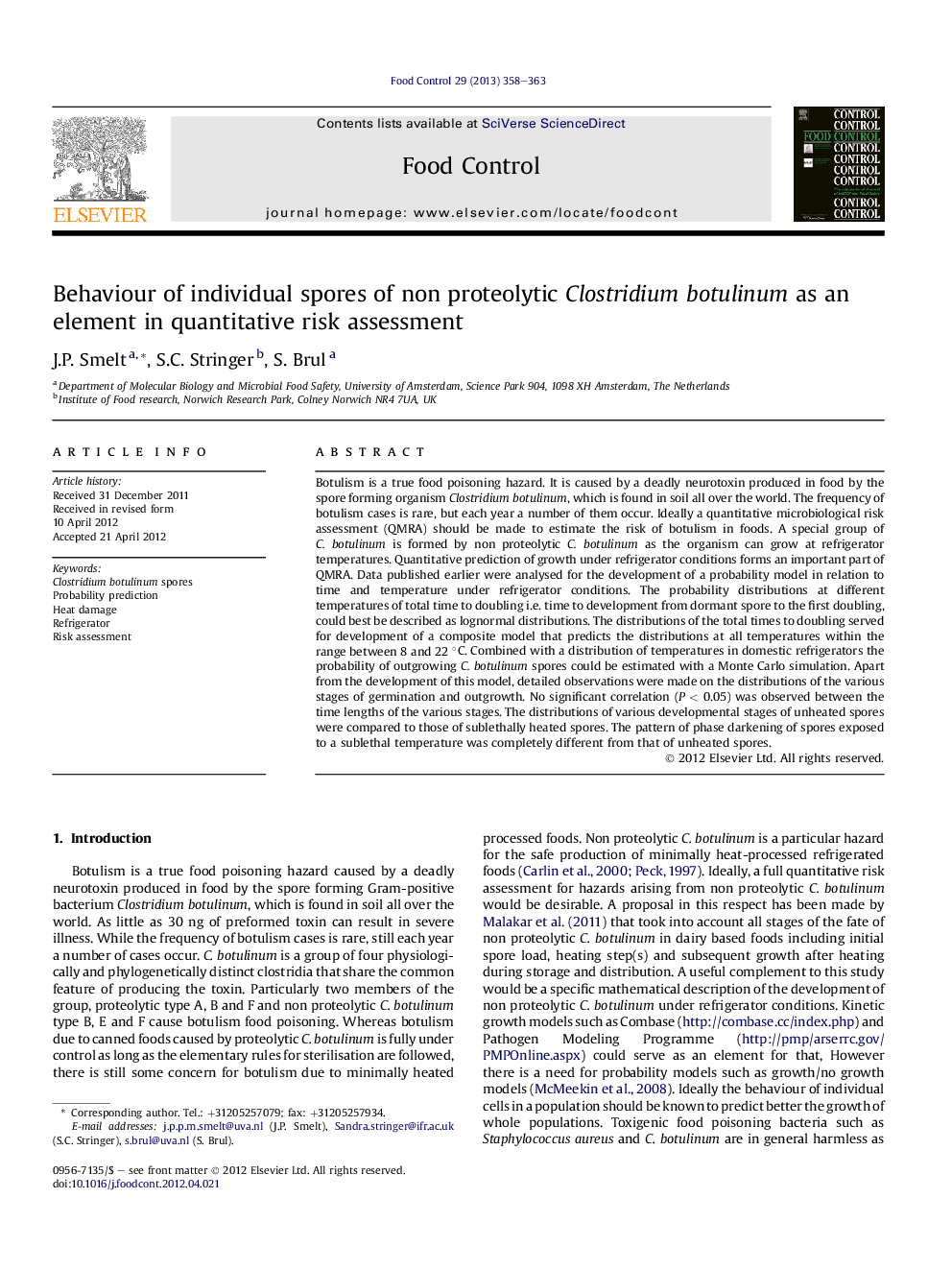| Article ID | Journal | Published Year | Pages | File Type |
|---|---|---|---|---|
| 6393163 | Food Control | 2013 | 6 Pages |
Abstract
Botulism is a true food poisoning hazard. It is caused by a deadly neurotoxin produced in food by the spore forming organism Clostridium botulinum, which is found in soil all over the world. The frequency of botulism cases is rare, but each year a number of them occur. Ideally a quantitative microbiological risk assessment (QMRA) should be made to estimate the risk of botulism in foods. A special group of C. botulinum is formed by non proteolytic C. botulinum as the organism can grow at refrigerator temperatures. Quantitative prediction of growth under refrigerator conditions forms an important part of QMRA. Data published earlier were analysed for the development of a probability model in relation to time and temperature under refrigerator conditions. The probability distributions at different temperatures of total time to doubling i.e. time to development from dormant spore to the first doubling, could best be described as lognormal distributions. The distributions of the total times to doubling served for development of a composite model that predicts the distributions at all temperatures within the range between 8 and 22 °C. Combined with a distribution of temperatures in domestic refrigerators the probability of outgrowing C. botulinum spores could be estimated with a Monte Carlo simulation. Apart from the development of this model, detailed observations were made on the distributions of the various stages of germination and outgrowth. No significant correlation (P < 0.05) was observed between the time lengths of the various stages. The distributions of various developmental stages of unheated spores were compared to those of sublethally heated spores. The pattern of phase darkening of spores exposed to a sublethal temperature was completely different from that of unheated spores.
Related Topics
Life Sciences
Agricultural and Biological Sciences
Food Science
Authors
J.P. Smelt, S.C. Stringer, S. Brul,
